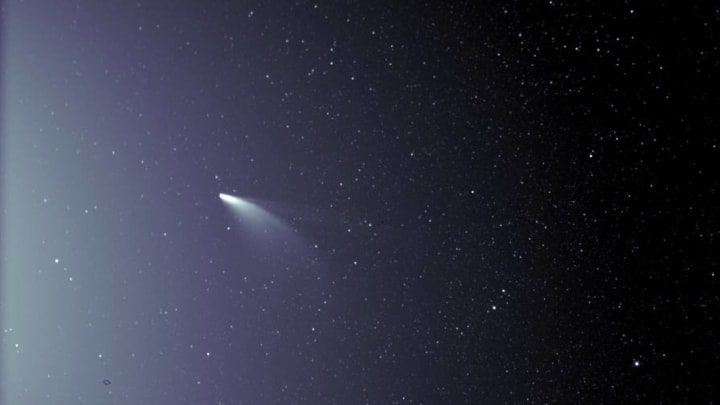On March 27, 2020, NASA’s Near-Earth Object Wide-field Infrared Survey Explorer discovered a new comet in our celestial neighborhood. The C/2020 F3 NEOWISE comet (or comet NEOWISE for short) became visible to more people than ever when it began appearing in northern latitudes during evening hours this month. If you want to catch the spectacle, July is the time to do so: After comet NEOWISE passes by Earth, it won't be visible for another 6000 years, Lifehacker reports.
Recently, comet NEOWISE appeared above the northern horizon in the predawn sky in the northern U.S. and Canada. Around July 12 through 15, the comet will start popping up after sunset as well as before sunrise. For your best chance at seeing it, wait until the evening of July 22 or the morning of the 23rd. According to EarthSky, that's when the comet flies closest to Earth. If comet NEOWISE maintains its current brightness, conditions will be best for spotting it on those dates.
Comet NEOWISE is technically a "naked eye" comet, but finding without equipment will be difficult. Shortly after sunset, grab your binoculars and look to the northwestern sky. It will appear closer to the horizon if you live farther south, and higher in the sky at higher latitudes. With each passing night, NEOWISE will creep higher, ending up beneath the Big Dipper when it reaches peak visibility on July 23.
Binoculars will make it easy to find comet NEOWISE and see its split tail. After locating the comet with your binoculars, you can try spotting it on your own. Comet NEOWISE looks like a blurry dot with the naked eye. Following its current visit, the C/2020 F3 NEOWISE won't be back in the night sky until around the year 8736.
[h/t Lifehacker]
